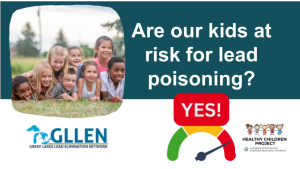
General Resources
LDA’s Healthy Children Project works to protect children from chemicals that can harm their brain health. In addition to our policy and market pressure work, we
LDA believes all children deserve healthy places to live, learn, play and grow. That’s why our Healthy Children Project (HCP) reduces pregnant women and children’s exposure to chemicals that harm brain health by advocating for safer products, food, water and air. We also the latest tips on how to protect your family from harmful chemicals.
The Learning Disabilities Associations Affiliates on the highlighted US map to the right participate in and support the Healthy Children Project.
Click the state on the map to visit each LDA Affiliate website.

LDA’s Healthy Children Project works to protect children from chemicals that can harm their brain health. In addition to our policy and market pressure work, we

Many people know that children can be exposed to lead from paint in older houses, in drinking water, and even in our food. But did

Shopping for school supplies? Here are some tips for purchasing supplies that have less chemicals that can harm children’s brains and learning potential. Look for

This Mother’s and Father’s Day let’s help end the 100% preventable childhood toxic lead exposure; Every child deserves a safe, lead-free home By: Kathryn Cappella,

It’s summertime and for many people that means more time outdoors. People aren’t the only ones that come out more in the summer though. Insects do too. So, we turn to bug repellents like sprays to protect our skin from pests like mosquitos and ticks. But, did you know that the active ingredients in most bug sprays are pesticides? Yes, with many bug sprays, we are actually putting pesticides on our skin – and on our children’s skin, but we don’t have to.
Here are some tips for choosing safer bug repellents for your family this summer from Tracy Gregoire, LDA’s Director of the Healthy Children Project, and Sydney Cook, the Director of Science and Research at MADE SAFE.

A BIG Healthy Children Project win! REI has announced they are removing PFAS from their products!